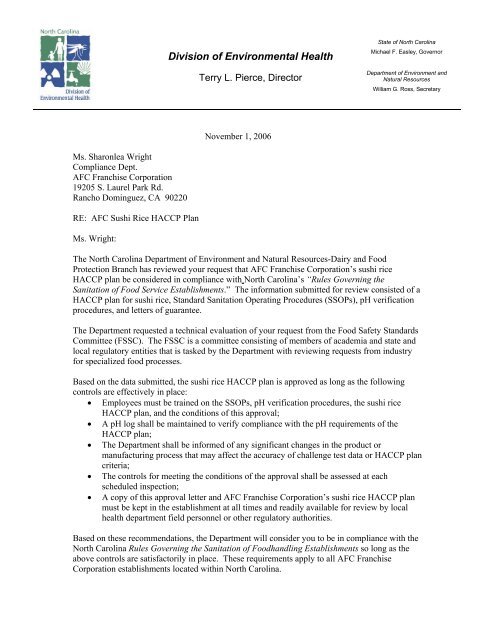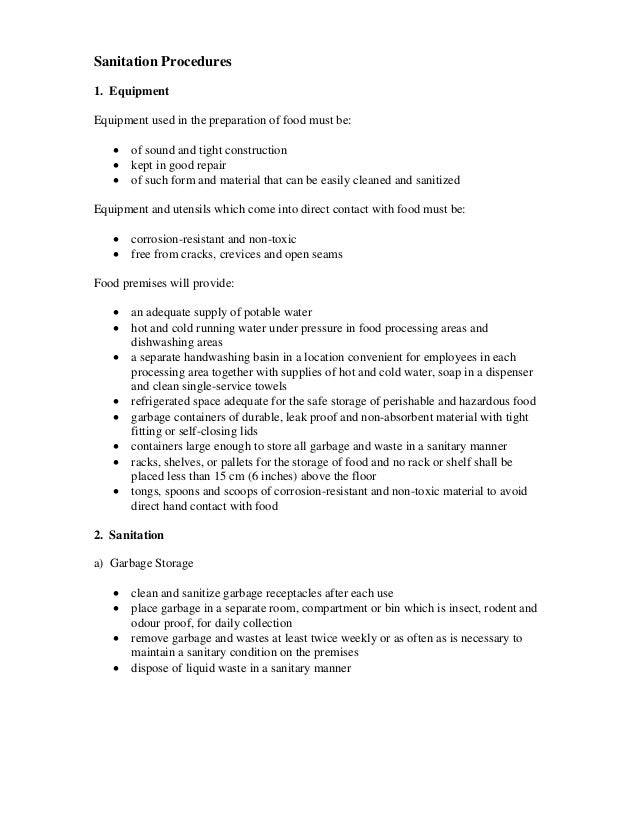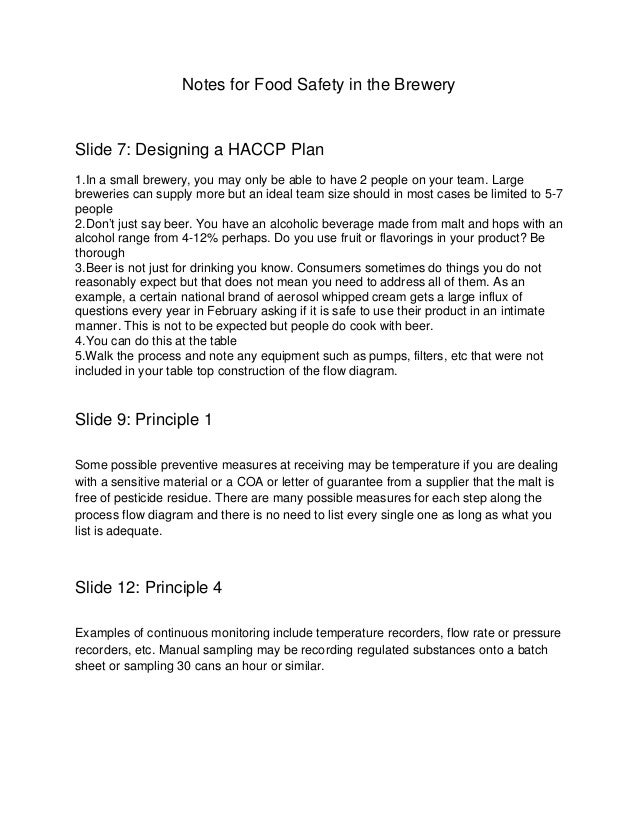Application of the Principles of HACCP
Letter of General & Continuing Guarantee. Haccp certificate of compliance. 1 DRAFT GUIDANCE: HACCP SYSTEMS VALIDATION. FSIS has developed this guidance document to aid small and very small plants and in particular low volume. Free download Haccp Letter Of Guarantee Template. Sample of guarantee letter. HACCP plan only is discussed throughout the rest of this document. Note: The HACCP system, rather than just the HACCP plan, is discussed throughout the rest of this document. Validation Has Two Parts. The HACCP system is defined as the HACCP plan in operation, including the HACCP plan itself. The HACCP plan in operation includes the hazard.
Upgrade Software Receiver. Berikut ini adalah Spesifikasi receiver parabola merk Tanaka T22 HD Jurassic PowerVu yang sudah bisa buat main game. 2017 at 7:28 PM. Tanaka T-22 HD Jurassic Review Tanaka T-22 HD Jurassic adalah salah satu. Keygen Iveco Easy Software. Software Only (agar. 22 september 2017.GSKY-V5HD apakah support di tanaka t22. May 22, 2019 Download software tanaka t22. 2017 Com is an internet radio stationTanaka T22 Jurassic HD Full Biss. 2016 Download Cara Upgrade Receiver Tanaka T22 HD. Tanaka T22 HD Digital Satellite Receiver. Red dawn 2012 full movie free watch. 47 Tanberg v2 Download tanberg v2 tanaka 21 Download software tanaka t22. Jun 25, 2019 Download Software Tanaka T22 Jurassic HD Full. Cara Cepat Program dan Setting Receiver Tanaka HD T 22 jurassic 23 maret 2017. Sofwere t22 jurasicc hd 2017.
Principle 1 - Conduct a Hazard Analysis

The application of this principle involves listing the steps in the process and identifying where significant hazards are likely to Occur. The HACCP team will focus on hazards that can be prevented, eliminated or controlled by the HACCP plan. A justification for including or excluding the hazard is reported and possible control measures are identified.
Principle 2 - Identify the Critical Control Points
Haccp Letter Of Guarantee Templates Letter
A critical control point (CCP) is a point, step or procedure at which control can be applied and a food safety hazard can be prevented, eliminated or reduced to acceptable levels. The HACCP team will use a CCP decision tree to help identify the critical control points in the process. A critical control point may control more that one food safety hazard or in some cases more than one CCP is needed to control a single hazard. The number of CCP's needed depends on the processing steps and the control needed to assure food safety.
Principle 3 - Establish Critical Limits

A critical limit (CL) is the maximum and/or minimum value to which a biological, chemical, or physical parameter must be controlled at a CCP to prevent, eliminate, or reduce to an acceptable level the occurrence of a food safety hazard. The critical limit is usually a measure such as time, temperature, water activity (Aw), pH, weight, or some other measure that is based on scientific literature and/or regulatory standards.
Principle 4- Monitor CCP
The HACCP team will describe monitoring procedures for the measurement of the critical limit at each critical control point. Monitoring procedures should describe how the measurement will be taken, when the measurement is taken, who is responsible for the measurement and how frequently the measurement is taken during production.
Principle 5 - Establish Corrective Action
Corrective actions are the procedures that are followed when a deviation in a critical limit occurs. The HACCP team will identify the steps that will be taken to prevent potentially hazardous food from entering the food chain and the steps that are needed to correct the process. This usually includes identification of the problems and the steps taken to assure that the problem will not occur again.
Principle 6 - Verification
Those activities, other than monitoring, that determine the validity of the HACCP plan and that the system is operating according to the plan. The HACCP team may identify activities such as auditing of CCP's, record review, prior shipment review, instrument calibration and product testing as part of the verification activities.
Principle 7 - Recordkeeping
A key component of the HACCP plan is recording information that can be used to prove that the a food was produced safely. The records also need to include information about the HACCP plan. Record should include information on the HACCP Team, product description, flow diagrams, the hazard analysis, the CCP's identified, Critical Limits, Monitoring System, Corrective Actions, Recordkeeping Procedures, and Verification Procedures.
HACCP Does not Stand Alone
The application of HACCP does not stand alone in a food processing facility. The plan must be built on other food safety programs. Good Manufacturing Practices (GMP) that are practiced by the processing facility will support HACCP plan and will address food safety and food quality issues that are not critical for the reduction of food safety hazards. Sanitation Standard Operating Procedures (SSOP's) are required in federally inspected meat and poultry operations and address procedures for clean facilities, equipment and personnel that are necessary for all products produced in a facility.
Application of the Principles of HACCP
Principle 1 - Conduct a Hazard Analysis

The application of this principle involves listing the steps in the process and identifying where significant hazards are likely to Occur. The HACCP team will focus on hazards that can be prevented, eliminated or controlled by the HACCP plan. A justification for including or excluding the hazard is reported and possible control measures are identified.
Haccp Letter Of Guarantee Templates Template
Principle 2 - Identify the Critical Control Points
A critical control point (CCP) is a point, step or procedure at which control can be applied and a food safety hazard can be prevented, eliminated or reduced to acceptable levels. The HACCP team will use a CCP decision tree to help identify the critical control points in the process. A critical control point may control more that one food safety hazard or in some cases more than one CCP is needed to control a single hazard. The number of CCP's needed depends on the processing steps and the control needed to assure food safety.
Principle 3 - Establish Critical Limits
Fda Letter Of Guarantee Template
A critical limit (CL) is the maximum and/or minimum value to which a biological, chemical, or physical parameter must be controlled at a CCP to prevent, eliminate, or reduce to an acceptable level the occurrence of a food safety hazard. The critical limit is usually a measure such as time, temperature, water activity (Aw), pH, weight, or some other measure that is based on scientific literature and/or regulatory standards.
Principle 4- Monitor CCP
Free Letter Of Guarantee
The HACCP team will describe monitoring procedures for the measurement of the critical limit at each critical control point. Monitoring procedures should describe how the measurement will be taken, when the measurement is taken, who is responsible for the measurement and how frequently the measurement is taken during production.
Incompatibilities between Mac OS X Lion (10.7) and our previously released Mac OS X 10.6 Printer and Fax drivers: Service Notice Jul 27, 2011 Service Notice: Google Termination of Support for Google Cloud Print will be ending December 31, 2020. Service Notice Dec 2, 2020. Memjet c6010 driver for mac. The imagePRESS C6010 is a cost effective solution for small to mid sized print shops looking for quality, productivity, and versatility. This press delivers the best combination of speed, performance and value in. Whether you are an OEM looking to integrate Memjet technology into your printing solution, a print provider looking for the right Powered by Memjet product or a brand owner who wants to use digital inkjet printing technology in new and interesting ways, we can help.
Principle 5 - Establish Corrective Action
Corrective actions are the procedures that are followed when a deviation in a critical limit occurs. The HACCP team will identify the steps that will be taken to prevent potentially hazardous food from entering the food chain and the steps that are needed to correct the process. This usually includes identification of the problems and the steps taken to assure that the problem will not occur again.
Principle 6 - Verification
Those activities, other than monitoring, that determine the validity of the HACCP plan and that the system is operating according to the plan. The HACCP team may identify activities such as auditing of CCP's, record review, prior shipment review, instrument calibration and product testing as part of the verification activities.
Haccp Letter Of Guarantee Example
Principle 7 - Recordkeeping The forest save file download.
Letter Of Guarantee Sample
A key component of the HACCP plan is recording information that can be used to prove that the a food was produced safely. The records also need to include information about the HACCP plan. Record should include information on the HACCP Team, product description, flow diagrams, the hazard analysis, the CCP's identified, Critical Limits, Monitoring System, Corrective Actions, Recordkeeping Procedures, and Verification Procedures.

The application of this principle involves listing the steps in the process and identifying where significant hazards are likely to Occur. The HACCP team will focus on hazards that can be prevented, eliminated or controlled by the HACCP plan. A justification for including or excluding the hazard is reported and possible control measures are identified.
Principle 2 - Identify the Critical Control Points
Haccp Letter Of Guarantee Templates Letter
A critical control point (CCP) is a point, step or procedure at which control can be applied and a food safety hazard can be prevented, eliminated or reduced to acceptable levels. The HACCP team will use a CCP decision tree to help identify the critical control points in the process. A critical control point may control more that one food safety hazard or in some cases more than one CCP is needed to control a single hazard. The number of CCP's needed depends on the processing steps and the control needed to assure food safety.
Principle 3 - Establish Critical Limits
A critical limit (CL) is the maximum and/or minimum value to which a biological, chemical, or physical parameter must be controlled at a CCP to prevent, eliminate, or reduce to an acceptable level the occurrence of a food safety hazard. The critical limit is usually a measure such as time, temperature, water activity (Aw), pH, weight, or some other measure that is based on scientific literature and/or regulatory standards.
Principle 4- Monitor CCP
The HACCP team will describe monitoring procedures for the measurement of the critical limit at each critical control point. Monitoring procedures should describe how the measurement will be taken, when the measurement is taken, who is responsible for the measurement and how frequently the measurement is taken during production.
Principle 5 - Establish Corrective Action
Corrective actions are the procedures that are followed when a deviation in a critical limit occurs. The HACCP team will identify the steps that will be taken to prevent potentially hazardous food from entering the food chain and the steps that are needed to correct the process. This usually includes identification of the problems and the steps taken to assure that the problem will not occur again.
Principle 6 - Verification
Those activities, other than monitoring, that determine the validity of the HACCP plan and that the system is operating according to the plan. The HACCP team may identify activities such as auditing of CCP's, record review, prior shipment review, instrument calibration and product testing as part of the verification activities.
Principle 7 - Recordkeeping
A key component of the HACCP plan is recording information that can be used to prove that the a food was produced safely. The records also need to include information about the HACCP plan. Record should include information on the HACCP Team, product description, flow diagrams, the hazard analysis, the CCP's identified, Critical Limits, Monitoring System, Corrective Actions, Recordkeeping Procedures, and Verification Procedures.
HACCP Does not Stand Alone
The application of HACCP does not stand alone in a food processing facility. The plan must be built on other food safety programs. Good Manufacturing Practices (GMP) that are practiced by the processing facility will support HACCP plan and will address food safety and food quality issues that are not critical for the reduction of food safety hazards. Sanitation Standard Operating Procedures (SSOP's) are required in federally inspected meat and poultry operations and address procedures for clean facilities, equipment and personnel that are necessary for all products produced in a facility.
Application of the Principles of HACCP
Principle 1 - Conduct a Hazard Analysis
The application of this principle involves listing the steps in the process and identifying where significant hazards are likely to Occur. The HACCP team will focus on hazards that can be prevented, eliminated or controlled by the HACCP plan. A justification for including or excluding the hazard is reported and possible control measures are identified.
Haccp Letter Of Guarantee Templates Template
Principle 2 - Identify the Critical Control Points
A critical control point (CCP) is a point, step or procedure at which control can be applied and a food safety hazard can be prevented, eliminated or reduced to acceptable levels. The HACCP team will use a CCP decision tree to help identify the critical control points in the process. A critical control point may control more that one food safety hazard or in some cases more than one CCP is needed to control a single hazard. The number of CCP's needed depends on the processing steps and the control needed to assure food safety.
Principle 3 - Establish Critical Limits
Fda Letter Of Guarantee Template
A critical limit (CL) is the maximum and/or minimum value to which a biological, chemical, or physical parameter must be controlled at a CCP to prevent, eliminate, or reduce to an acceptable level the occurrence of a food safety hazard. The critical limit is usually a measure such as time, temperature, water activity (Aw), pH, weight, or some other measure that is based on scientific literature and/or regulatory standards.
Principle 4- Monitor CCP
Free Letter Of Guarantee
The HACCP team will describe monitoring procedures for the measurement of the critical limit at each critical control point. Monitoring procedures should describe how the measurement will be taken, when the measurement is taken, who is responsible for the measurement and how frequently the measurement is taken during production.
Incompatibilities between Mac OS X Lion (10.7) and our previously released Mac OS X 10.6 Printer and Fax drivers: Service Notice Jul 27, 2011 Service Notice: Google Termination of Support for Google Cloud Print will be ending December 31, 2020. Service Notice Dec 2, 2020. Memjet c6010 driver for mac. The imagePRESS C6010 is a cost effective solution for small to mid sized print shops looking for quality, productivity, and versatility. This press delivers the best combination of speed, performance and value in. Whether you are an OEM looking to integrate Memjet technology into your printing solution, a print provider looking for the right Powered by Memjet product or a brand owner who wants to use digital inkjet printing technology in new and interesting ways, we can help.
Principle 5 - Establish Corrective Action
Corrective actions are the procedures that are followed when a deviation in a critical limit occurs. The HACCP team will identify the steps that will be taken to prevent potentially hazardous food from entering the food chain and the steps that are needed to correct the process. This usually includes identification of the problems and the steps taken to assure that the problem will not occur again.
Principle 6 - Verification
Those activities, other than monitoring, that determine the validity of the HACCP plan and that the system is operating according to the plan. The HACCP team may identify activities such as auditing of CCP's, record review, prior shipment review, instrument calibration and product testing as part of the verification activities.
Haccp Letter Of Guarantee Example
Principle 7 - Recordkeeping The forest save file download.
Letter Of Guarantee Sample
A key component of the HACCP plan is recording information that can be used to prove that the a food was produced safely. The records also need to include information about the HACCP plan. Record should include information on the HACCP Team, product description, flow diagrams, the hazard analysis, the CCP's identified, Critical Limits, Monitoring System, Corrective Actions, Recordkeeping Procedures, and Verification Procedures.
HACCP Does not Stand Alone
The application of HACCP does not stand alone in a food processing facility. The plan must be built on other food safety programs. Good Manufacturing Practices (GMP) that are practiced by the processing facility will support HACCP plan and will address food safety and food quality issues that are not critical for the reduction of food safety hazards. Sanitation Standard Operating Procedures (SSOP's) are required in federally inspected meat and poultry operations and address procedures for clean facilities, equipment and personnel that are necessary for all products produced in a facility.
